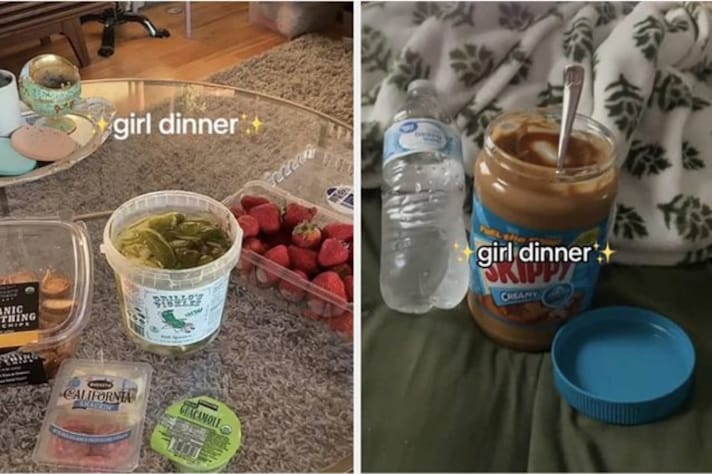
In the ever-evolving world of internet trends, the term "Girl Dinner" has captured attention and recently earned a spot in the lexicon of Dictionary.com. But what exactly is "Girl Dinner," and why has its inclusion sparked both celebration and criticism? Let’s dive into this modern phenomenon to understand what it represents, why it resonated so strongly with many, and why its official recognition in the dictionary has some people up in arms.
What Is "Girl Dinner"?
"Girl Dinner" refers to a trend that began on social media, particularly TikTok, where users, mostly women, showcase meals that are less traditional and more casual, often resembling a grazing board rather than a structured plate. Think of it as a collection of small, snack-like foods—cheese, olives, crackers, fruits, and maybe a glass of wine—that together make up a meal. The concept plays on the idea that sometimes, instead of cooking a full dinner, a mix of favorite snacks or finger foods can be just as satisfying, if not more so.
The appeal of "Girl Dinner" lies in its simplicity and relatability. It’s a meal without rules, reflecting a laid-back approach to eating that many find liberating. For those who often dine alone or prefer to keep meals low-key, the trend resonates as both fun and authentic. It’s about embracing what you love to eat, even if it doesn’t fit the mold of a traditional dinner.

Why Was "Girl Dinner" Added to the Dictionary?
The inclusion of "Girl Dinner" in Dictionary.com is a testament to the cultural impact the trend has made. In a world where language constantly evolves to reflect societal shifts, the term has become widely recognized, transcending its social media origins. The dictionary's role is to document words and phrases that have entered common usage, and "Girl Dinner" certainly fits the bill. It’s not just a passing fad; it’s a phrase that encapsulates a specific mindset and lifestyle that resonates with a large demographic.
Dictionary.com’s decision to include "Girl Dinner" also highlights how digital trends influence our language. It shows that our online habits, even something as seemingly trivial as sharing what’s on our plate, can shape the way we communicate. It’s a reflection of modern life, where the boundaries between online culture and everyday language are increasingly blurred.

Why Some People Aren’t Happy
Despite its popularity, not everyone is thrilled about "Girl Dinner" being recognized by a reputable source like Dictionary.com. Critics argue that the term perpetuates gender stereotypes, suggesting that women are more likely to engage in disordered or irregular eating habits. Some see it as a trivialization of both women's eating behaviors and the broader culinary culture. The name itself, "Girl Dinner," is seen by some as infantilizing, reducing women’s dietary choices to something whimsical or unserious.
Others are concerned that the trend could encourage unhealthy eating patterns, as it often emphasizes minimal preparation and, sometimes, low nutritional value. While the idea of a casual, snack-based meal can be empowering, there’s a fine line between enjoying a light, unstructured meal and promoting behaviors that might not meet one’s nutritional needs. This debate reflects broader societal concerns about diet culture and the way food trends can impact people’s relationships with eating.
;Resize,width=767;)
